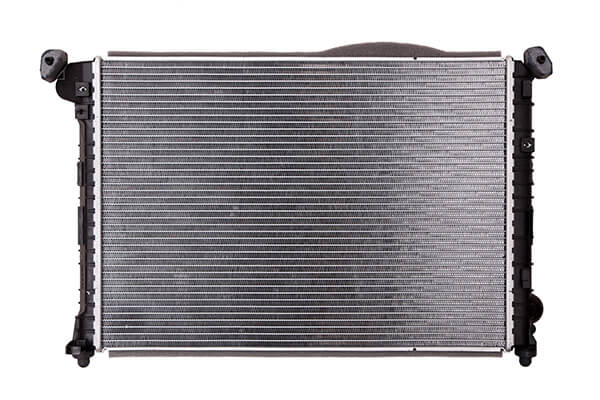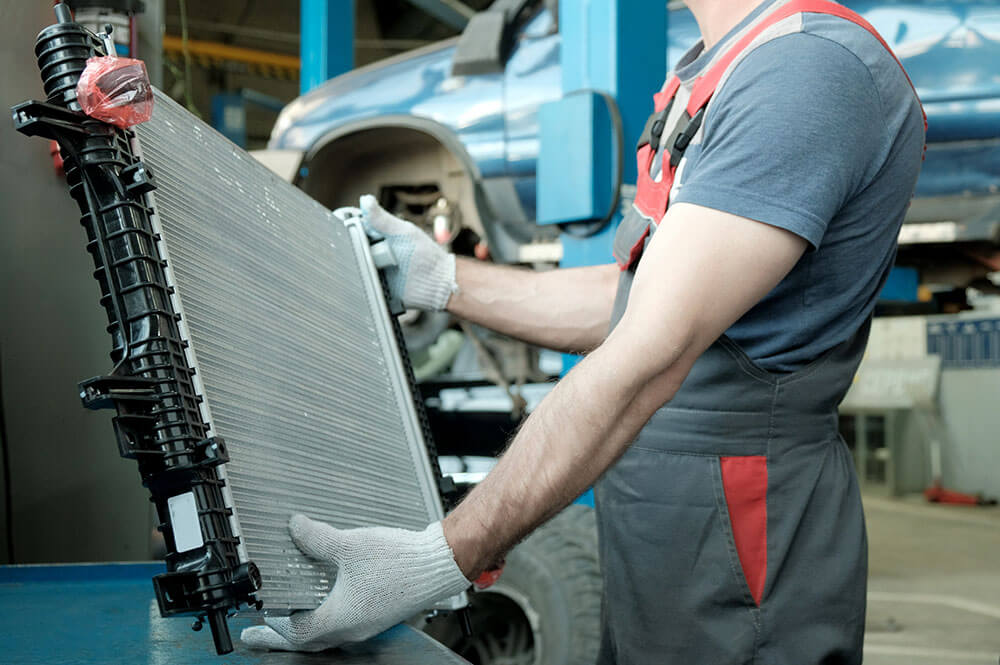There are so many parts to a vehicle that you may find yourself wondering, “what is a radiator?” and “what does a radiator do?” Radiators play a critical role in removing excess heat from your vehicle’s engine. It does this by releasing cool liquid through the engine to absorb the excess heat, which is then circulated back to the radiator to be cooled again. This essential part of your cooling system is constantly working to keep your engine running at an optimal temperature for the best performance and prevent costly damage.

Radiators have an estimated life expectancy of 8 to 10 years. With proper maintenance and service, you can get the most out of your radiator and avoid costly cooling system repairs. Some radiators have even lasted the life of the vehicle.
Some of the best ways to keep your radiator in the most excellent condition possible include:
If you’re unsure if your radiator is due for service, stop by the Grease Pro nearest you today and our team will happily inspect your vehicle and give you recommendations.
When it comes to radiators, there are a few key things you will notice if something is wrong. Some possible signs of a bad radiator are car overheating, coolant with a rusty tinge, a radiator leak, or consistently low coolant levels.
Radiator leaks can come from various parts. The leakage can be caused by a faulty radiator cap that allows liquid to overflow, old radiator hoses that may have holes, bad hose clamps that do not provide a proper seal, or radiator reservoir damage. In some cases, sediment and rust can create holes in the radiator itself.
If you notice any of the signs or suspect any issues, visit Grease Pro to let the team test the radiator and recommend any necessary cooling system repair that may be needed.
You’re driving down the road, and suddenly you notice smoke or steam coming from under your hood, which may be accompanied by a hissing sound. That likely means radiator or cooling system problems and you should pull over and turn the vehicle off as soon as safely possible. If you experience radiator smoking, it is a sure sign that radiator problems exist and that your vehicle has overheated.
Never open the hood to see what’s going on right away. It is essential to let the vehicle cool to avoid injury. Attempting to drive your vehicle in this state will likely lead to further damage. The best solution is to get your car to a shop via towing so that radiator specialists can assess any damage and perform the necessary repairs.
A number of factors can cause a bad radiator. Winter temperatures can cause a radiator to crack if coolant levels are not maintained properly. The fluid can freeze and expand, resulting in a damaged radiator requiring repairs.
Radiator clips and hoses will experience wear and tear over time, and if clips break and the hoses come unattached, this can lead to serious coolant leaks.
Other major issues can include a failing radiator fan or water pump. If a cooling fan fails, the radiator can no longer effectively cool the liquid in your cooling system, which means your engine temperature will climb until overheating. Your water pump is responsible for drawing cool liquid from the radiator and sending it through your cooling system, which returns to the radiator to be cooled again. If the water pump fails, the engine will surely overheat, leading to severe damage, such as a cracked engine block or head gasket.

If you’ve attempted to fix a radiator leak and are still watching the temperature gauge creep up or constantly battling low coolant levels, that is a good sign it may be time to replace a bad radiator. Before doing so, you will want to consult a shop to test your radiator to find what causes the radiator to leak and if any other issues exist.
When having your radiator changed, you can expect the job to take between 1 and 3 hours. After draining the radiator, it is disconnected and removed. Once the new radiator is mounted, our team will add coolant, check all fluid levels, and bleed air from the cooling system. It’s important to confirm the vehicle is not overheating when the job is complete and to check again for leaks to ensure all issues are resolved.
Whatever the cooling system repairs needed, you can turn to the team at Grease pro for quality service.
With 12 locations, there's always one close by to service your Radiator Replacement needs.
BROWSE ALL LOCATIONS +